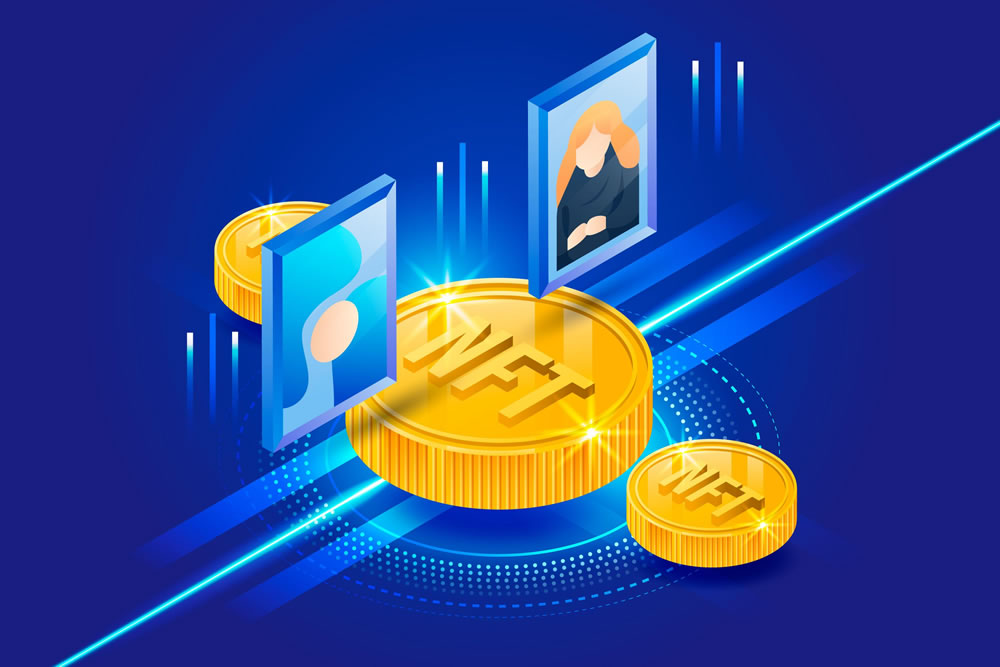Over the last decade, blockchain technology has given us many ideas to play around with. One of those ideas was that of cryptocurrencies.
At present, cryptocurrency has gained immense popularity. People buy cryptocurrency with credit cards or bank transfers and later trade them against fiat (regular currency) or other cryptos. Purchasing cryptocurrency has become a hobby for many as well. However, cryptocurrency is not the only thing blockchain technology has blessed us with. It has also given us NFTs.
NFTs – Non-Fungible Tokens – are impacting our lives in many ways. However, at present, it is revolutionizing art. NFTs are also helping new artists and photographers succeed in this unpredictable market. How so? Let us find out.

Art Sales are Influenced by Supply and Demand
Art sales, like all other markets, are influenced by supply and demand. If an artist sells a piece of art that is highly demanded and there is low supply (e.g., limited editions), the price will be higher than if that same piece was widely available to anyone who wanted it. NFTs, as they relate to art, can help artists sell their work through scarcity.
By minting a unique NFT for each artwork, the artist might be able to sell several copies of a single piece for different prices. It depends on how many NFTs are made available for sale at any given time. That makes the market more fluid and gives artists more flexibility in pricing their work based on demand. In addition to creating scarcity around digital pieces of art (which helps with value), it also helps make your data immutable so nobody can claim your work as their own.
It also adds an extra layer of authentication when you’re buying artwork since there’s proof that it exists somewhere out there in cyberspace–even though no one has seen what it looks like before!
Finally, because these pieces are only available via blockchain networks, they can sell directly from person to person without having any middlemen take cuts off your profits as would happen with traditional online retailers.

NFTs Help Establish Pricing
NFTs can also reduce uncertainty and help with establishing pricing. If you’re an artist or photographer who has been selling your work for some time, NFTs can help you establish a better price point by seeing how other people are valuing similar works.
Once you have sold several pieces of art as NFTs, the prices that you set for the later works will be based on the performance of previous ones. In this way, artists can make sure that their work is valued appropriately by the market.
Creates a More Sustainable Business.
Think of NFTs and cryptocurrencies as a new way of doing business, a way to break away from the old model of publishing, selling, and marketing. In this system, no one is your boss. Instead, you can monetize your work in a new way.
For an artist trying to make it on their own, building a sustainable business is particularly difficult. With cryptocurrency and NFTs, artists will be able to take control of the sale of their work by creating tokens that they can sell directly to consumers. That allows them to build relationships with customers more directly than ever before.
Artists Can Grow Their Audiences
As a new artist, it can be hard to get your name out there and find a buyer for your work. One of the easiest ways to promote yourself and your art is through non-fungible tokens (NFTs). An NFT allows you to showcase your work without having to worry about anyone copying or stealing it. The blockchain technology behind an NFT grants you ownership over an item and gives it value, making it easier for potential buyers to find and buy from you!
You can also use NFTs as a way to build up your audience. Some platforms allow users who like certain types of art to share their interests with others on the platform. That can be a great way for artists just starting in the industry—or those looking for new avenues—to connect with fans or customers who might not have seen their work otherwise!

More Flexible
While an NFT is a rare digital asset, it does not represent a fixed piece of art. Once your artwork is sold as an NFT, you can still keep the original digital file and sell it in different ways (and at different prices) on several platforms to collectors around the world.
Here are some examples of how you can use digital artworks after selling them as NFTs:
- You can sell your digital art as a physical copy through print-on-demand sites like Society6 or RedBubble.
- You can offer exclusive limited editions of your art for sale on other marketplaces, such as Etsy or eBay.
- You can sell licensing rights to buyers who want to use your artwork in their products. They could be apparel designers, book publishers, or album cover artists—the possibilities are endless!
Perfect Way to Increase the Value of Their Art
NFTs can be the perfect way for an artist to elevate their craft and increase the value of their art. As they’re recorded on a blockchain, NFTs are virtually impossible to counterfeit, making it easier to track, authenticate and price works of art. That can give artists more opportunities to sell their work and receive the compensation they deserve. It also provides more accurate pricing information than previously available with traditional methods.
In short, NFTs offer a more sustainable business model for artists and photographers who want to monetize their work flexibly.










